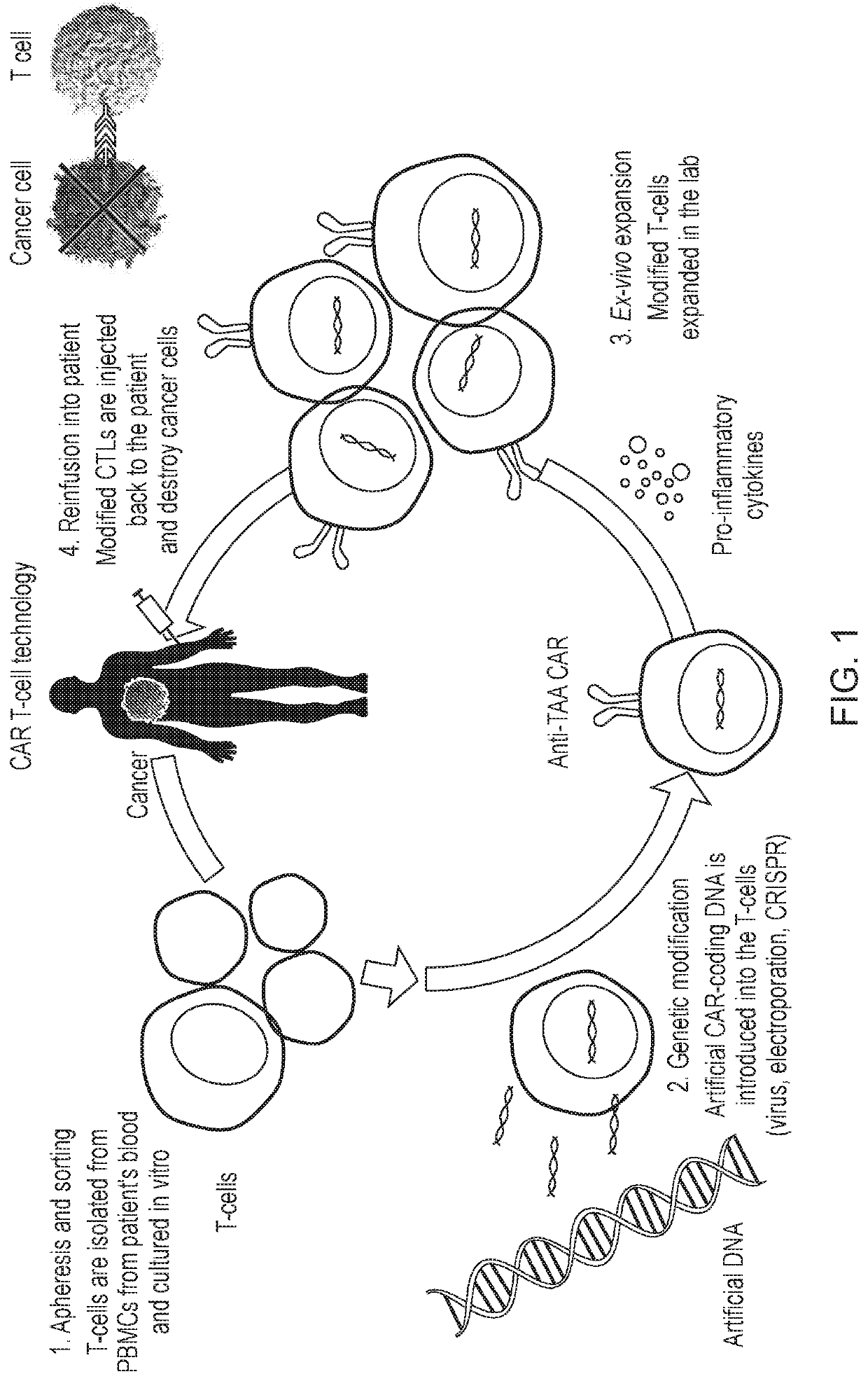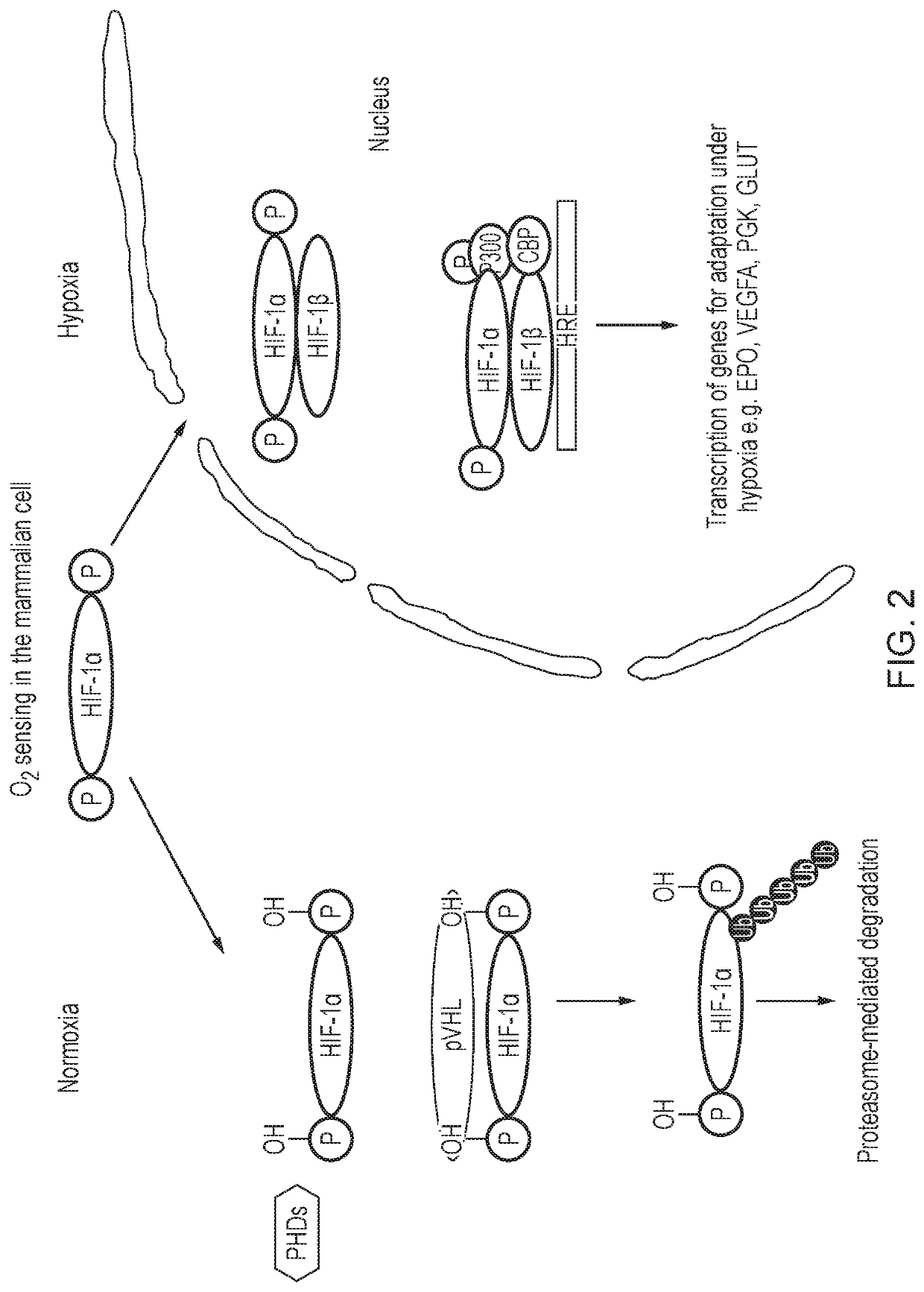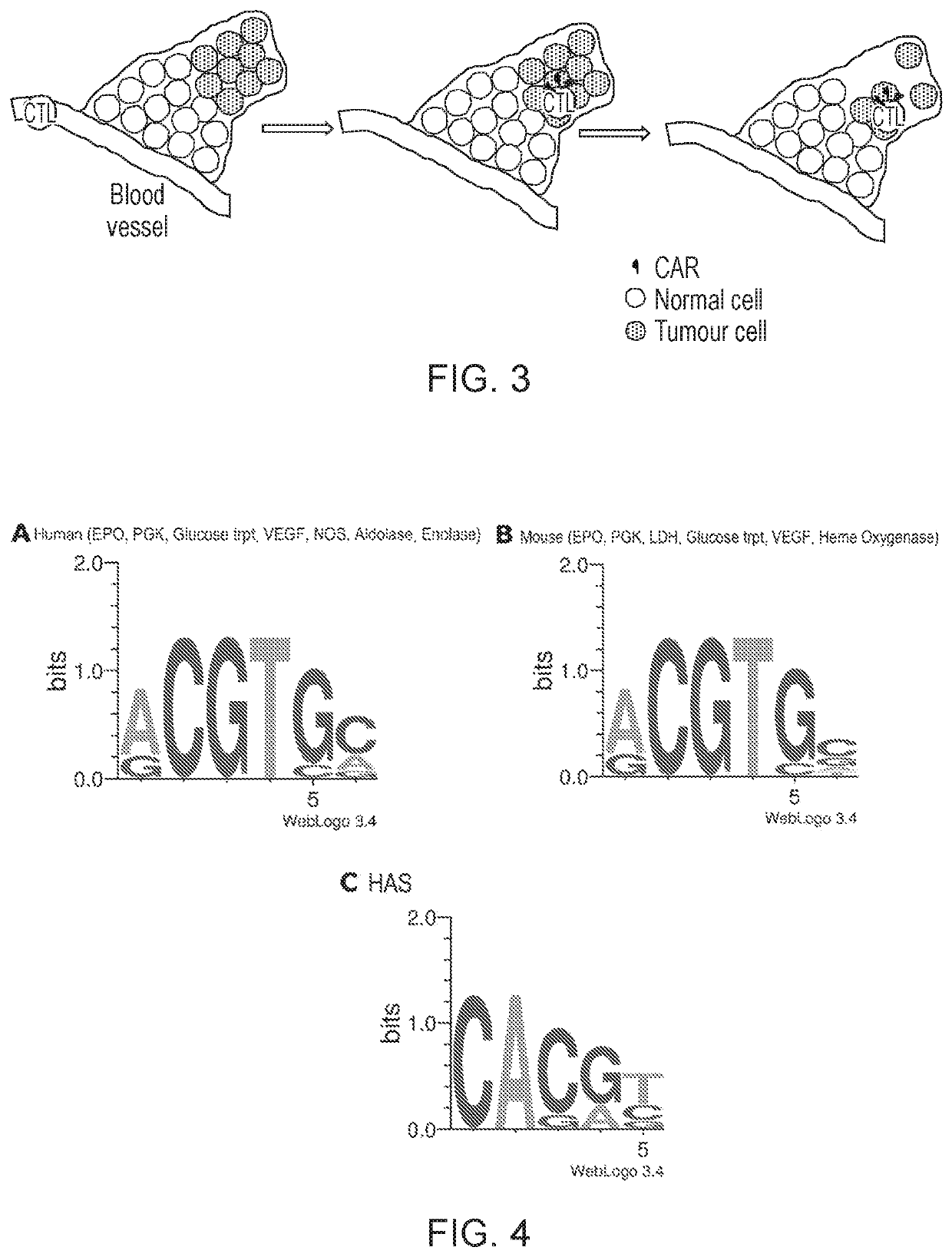Hypoxia-responsive chimeric antigen receptors
a chimeric antigen receptor and hyperoxia technology, applied in the field of therapeutic agents, can solve the problems of lethal toxicities, off-target car t-cell activation within normal tissues, complex solid tumor microenvironment challenges the current car-t approach, etc., and achieve the effect of reducing or substantial elimination of off-target effects
- Summary
- Abstract
- Description
- Claims
- Application Information
AI Technical Summary
Benefits of technology
Problems solved by technology
Method used
Image
Examples
examples
[0282]The invention will now be described with reference to the following examples.
[0283]Materials and Methods
[0284]Constructs
[0285]Three HRE sequences, each containing three in tandem HBS from human EPO, VEGFA and GLUT3, were synthesized by GeneArt (ThermoFisher Scientific) and flanked by a NheI and an XbaI restriction sites. These sequences were sub-cloned and replaced the natural NheI / XhoI sequence within the 3′ LTR of the SFG Moloney murine leukemia virus plasmid. Specific modification of the 3′ LTR was achieved by the synthesis of a XhoI / EcoRI-flanked intermediate fragment, which contained the HREs, achieved using primers that contained the restriction enzyme sites and complementary sequences to the respective HRE cassettes. Overlapping PCR and sub-cloning of the fragment achieved insertion into the SFG vector. Next, a protein-coding sequence coding for green-emitting variant of click beetle luciferase and green fluorescent protein separated by a P2A was cloned into NcoI / XhoI s...
PUM
| Property | Measurement | Unit |
|---|---|---|
| Fraction | aaaaa | aaaaa |
| Fraction | aaaaa | aaaaa |
| Fraction | aaaaa | aaaaa |
Abstract
Description
Claims
Application Information
 Login to View More
Login to View More - R&D
- Intellectual Property
- Life Sciences
- Materials
- Tech Scout
- Unparalleled Data Quality
- Higher Quality Content
- 60% Fewer Hallucinations
Browse by: Latest US Patents, China's latest patents, Technical Efficacy Thesaurus, Application Domain, Technology Topic, Popular Technical Reports.
© 2025 PatSnap. All rights reserved.Legal|Privacy policy|Modern Slavery Act Transparency Statement|Sitemap|About US| Contact US: help@patsnap.com



